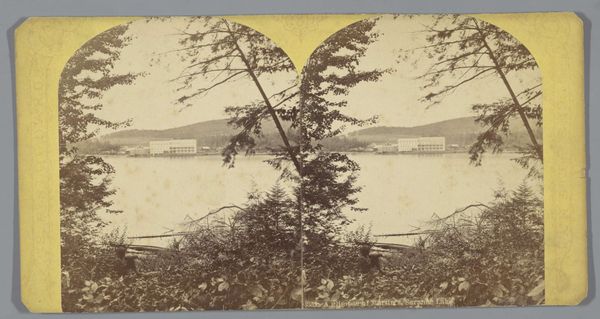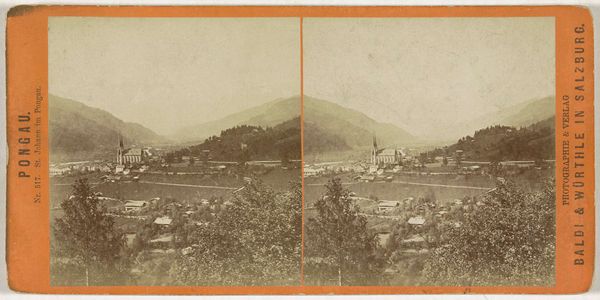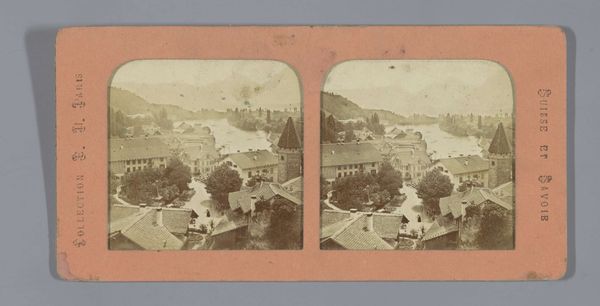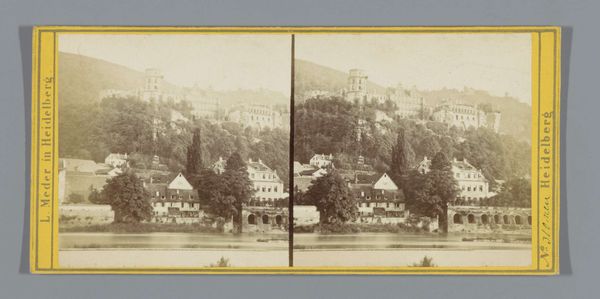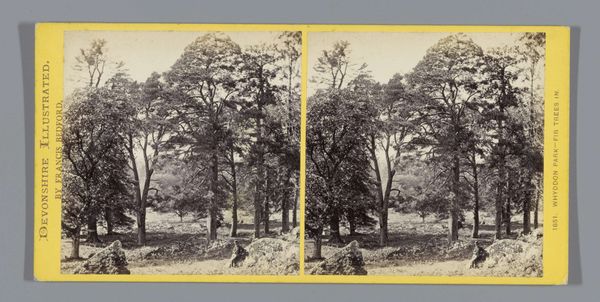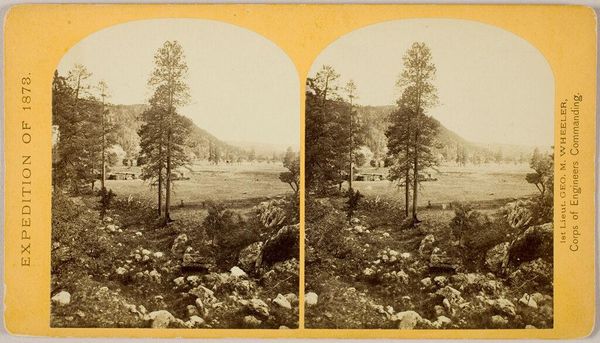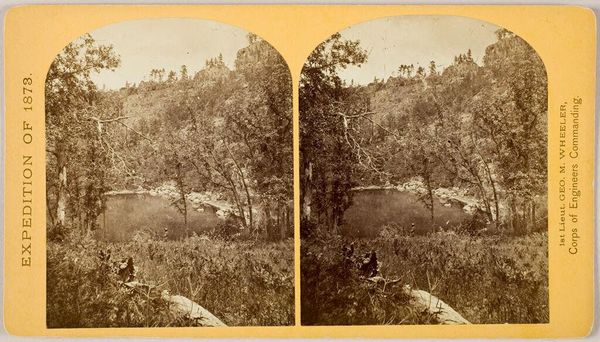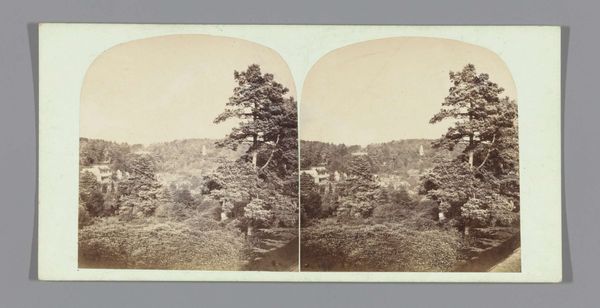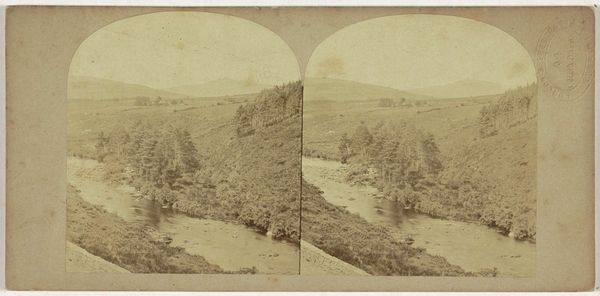
Dimensions: height 85 mm, width 170 mm
Copyright: Rijks Museum: Open Domain
Francis Bedford made this stereoscopic albumen print, a “Heuvellandschap nabij Torquay,” by using photography, a distinctly modern process for the time. This wasn't painting or sculpture, relying on direct manipulation. Instead, it depended on mechanical and chemical means. The key here is understanding the relationship between photography and industrialization. Photography was both a product of, and a contributor to, the rise of mass production. The making of photographs, from coating the glass plate to developing the print, was a complex process. This demanded skilled labor, but also allowed for a degree of standardization that aligned perfectly with the era's push for efficiency. Consider the cultural significance: photography democratized image-making. No longer was the creation of landscape images limited to the wealthy. Bedford's work, and others like it, brought the Devonshire countryside to a wider audience. The rise of tourism and the commercialization of leisure are key to the image’s appeal. Ultimately, this photograph reflects the shifting landscape of art and labor in the industrial age, blurring the lines between art, craft, and industry.
Comments
No comments
Be the first to comment and join the conversation on the ultimate creative platform.

